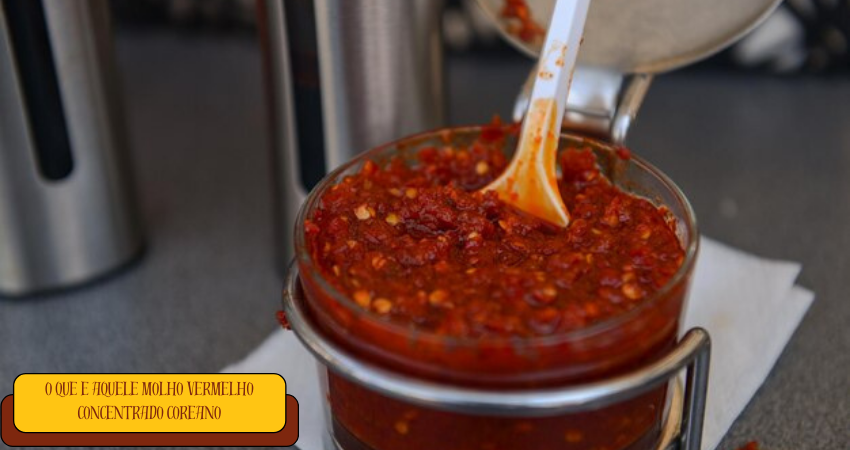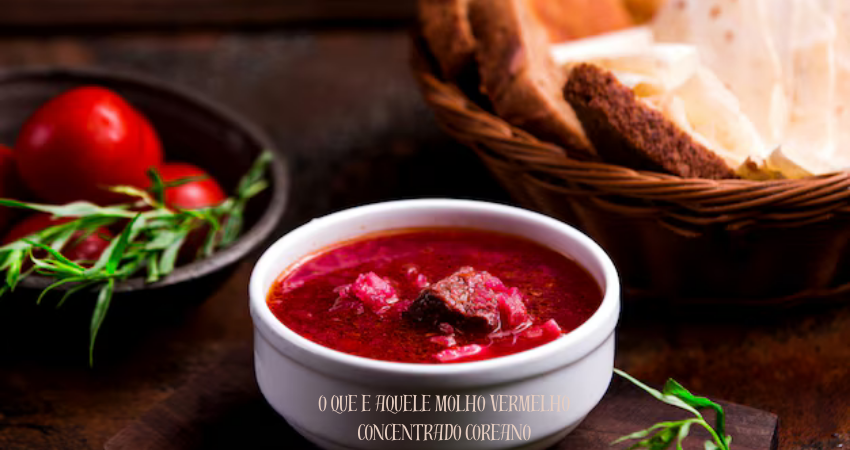There exists a culinary secret in the heart of Korea, a mystical elixir that carries the whispers of ancient traditions and the o que e aquele molho vermelho concentrado coreano. This secret is known as Gochujang, a concentrated red sauce that is much more than just an ingredient. It is the fiery soul of Korean cuisine, a symbol of the country’s rich cultural tapestry, and a testament to the power of patience and precision.
The Birth of Gochujang: A Story Woven Through Time
The Origins of Gochujang
In the o que e aquele molho vermelho concentrado coreano, nestled between mountains and rivers, the birth of Gochujang began centuries ago. Its story is one of simplicity and complexity, a tale where time is the most crucial ingredient. It starts with a humble soybean, fermented slowly under the watchful eyes of Korean artisans. Mixed with glutinous rice, salt, and the vibrant red chilies that give Gochujang its distinctive color, this paste is left to mature, often for years, in earthenware pots known as “onggi.” The result is a sauce that is as deep and complex as the history it carries.
The Importance of Fermentation
Fermentation is the alchemical process that transforms simple ingredients into a symphony of flavors. In the case of Gochujang, fermentation is not just a method; it is an art. The microorganisms involved work in harmony, breaking down the starches into sugars, which then develop into the rich, umami-laden sweetness that characterizes this sauce. This slow transformation, which can take anywhere from several months to years, imbues Gochujang with layers of flavor that unfold like a well-told story with every taste.
The Ingredients: A Harmony of Nature’s Gifts
The Core Ingredients of Gochujang
At the heart of Gochujang are four simple yet powerful ingredients: soybeans, glutinous rice, red chili peppers, and salt. Each element plays a crucial role, contributing to the sauce’s unique flavor profile.

Soybeans – The Foundation of Depth
Soybeans form the base of Gochujang, providing a rich, earthy umami that anchors the sauce. This protein-rich legume is fermented, transforming into a deep, savory flavor that is essential to Gochujang’s identity.
Glutinous Rice – The Sweet Balance
Glutinous rice, or o que e aquele molho vermelho concentrado coreano adds a subtle sweetness that balances the heat of the chilies. The starches in the rice break down during fermentation, giving Gochujang its characteristic thick, sticky texture.
Red Chili Peppers – The Fiery Heart
The red chili peppers are the fiery heart of Gochujang, imbuing the sauce with its signature heat and vibrant color. Introduced to Korea in the 16th century, these peppers have become a symbol of Korean culinary identity.
Salt – The Silent Guardian
Salt, the silent guardian of preservation, ensures that Gochujang can be stored and aged for long periods. It also plays a role in controlling the fermentation process, allowing the flavors to develop fully.
The Flavors: A Symphony of Sweet, Spicy, and Savory
The Taste of Gochujang
Gochujang is a complex tapestry of flavors. The initial taste is a sweet warmth, quickly followed by a growing heat that lingers on the palate. Beneath the surface lies a deep umami richness, a result of the fermentation process, which adds depth and complexity to the sauce.
The Versatility of Gochujang
Gochujang in Korean Culture: A Connection to Heritage
The Cultural Significance of Gochujang
In Korean culture, Gochujang is more than just a condiment; it is a connection to heritage. The making of Gochujang is often a communal activity, bringing families and communities together. It is a tradition passed down through generations, each family adding their own touch to the recipe.
Gochujang in Korean Cuisine
Gochujang is a staple in Korean cuisine, featured in dishes like Bibimbap, Tteokbokki, and Bulgogi. Its presence in these dishes is not just for flavor but also as a symbol of Korean identity. To taste Gochujang is to taste the essence of Korea.
The Global Rise of Gochujang: From Tradition to Trend
Gochujang Goes Global
In recent years, Gochujang has transcended its traditional roots to become a global culinary trend. Chefs around the world are embracing its unique flavor, incorporating it into everything from burgers to pasta. Its rise is a testament to the universal appeal of its sweet, spicy, and umami-rich profile.

Gochujang in Modern Cuisine
In modern cuisine, Gochujang is being used in innovative ways. It is a key ingredient in fusion dishes, where its bold flavor brings a taste of Korea to global palates. From gourmet restaurants to home kitchens, Gochujang is becoming a favorite among those who seek to add a touch of heat and complexity to their dishes.
Conclusion: A Fiery Love Letter to Gochujang
FAQs
What dishes commonly use Gochujang?
Gochujang is a staple in dishes like Bibimbap, Tteokbokki, and Bulgogi, but its versatility means it can be used in a wide range of recipes, from marinades to dipping sauces.
Can I make Gochujang at home?
Yes, Gochujang can be made at home, though it requires patience and time for fermentation. Many traditional recipes have been passed down through generations, and homemade Gochujang often carries a unique, personal touch.
How should Gochujang be stored?
Gochujang should be stored in a cool, dark place, preferably in an airtight container. Once opened, it can be kept in the refrigerator for several months, where its flavors will continue to develop.
Is Gochujang gluten-free?
Traditional Gochujang is made with glutinous rice, which is gluten-free. However, some commercial varieties may contain gluten, so it’s important to check the label if you have a gluten intolerance.
How spicy is Gochujang?
The spiciness of Gochujang can vary depending on the recipe and the amount of chili peppers used. It typically has a medium heat level, balanced by sweetness and umami


